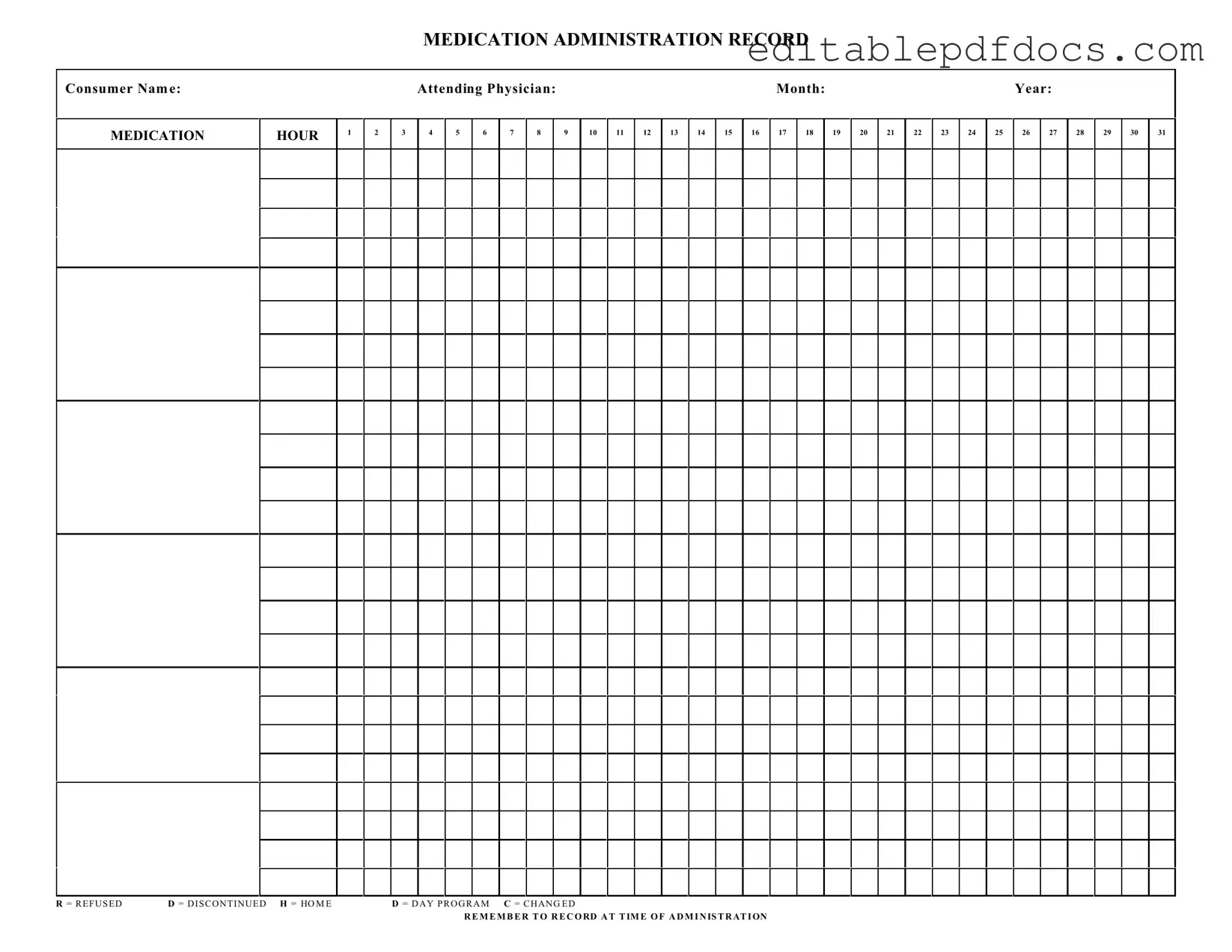The Medication Administration Record Sheet (MARS) serves as a vital tool in the healthcare system, ensuring accurate tracking of medication administered to patients. This form is designed to capture essential information, including the consumer's name, attending physician, and the specific month and year of administration. Each hour of the day is meticulously laid out, allowing healthcare providers to document the precise time medications are given. Notably, the form includes designated areas to indicate various statuses of medication, such as "Refused," "Discontinued," or "Changed." These notations are crucial for maintaining a clear and comprehensive record of a patient’s medication regimen. By providing a structured format, the MARS enhances communication among healthcare professionals, ultimately contributing to better patient outcomes. The importance of timely and accurate documentation cannot be overstated; it is essential that all entries are made at the time of administration to ensure the integrity of the patient’s medical record.
